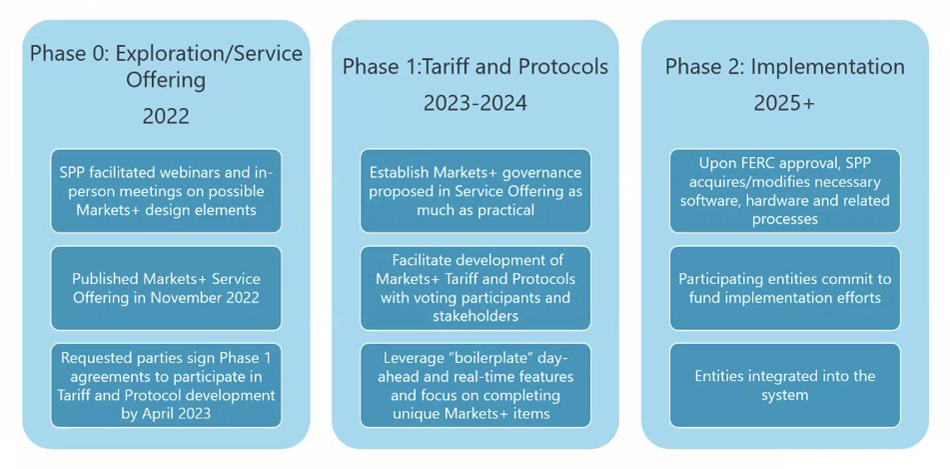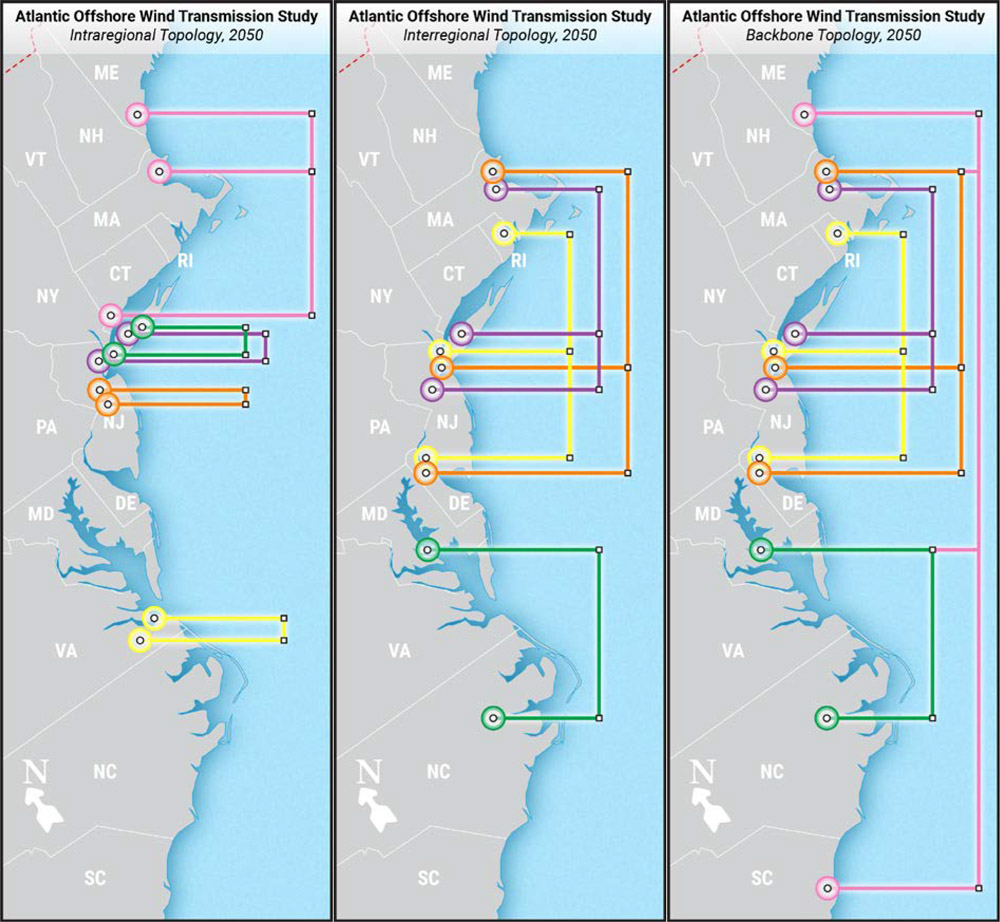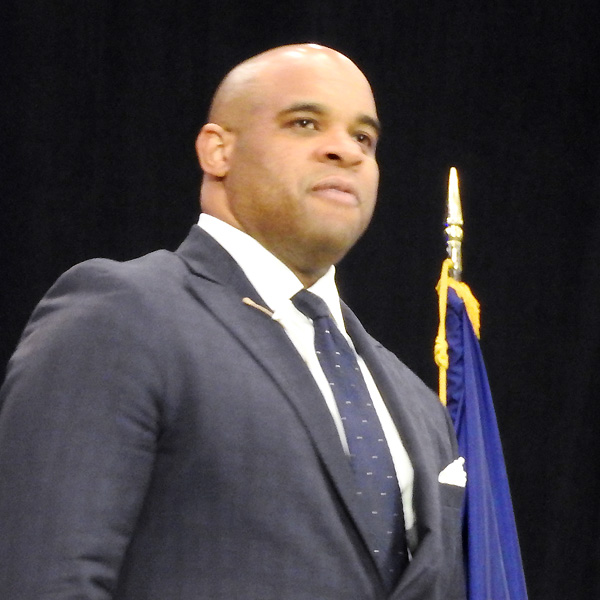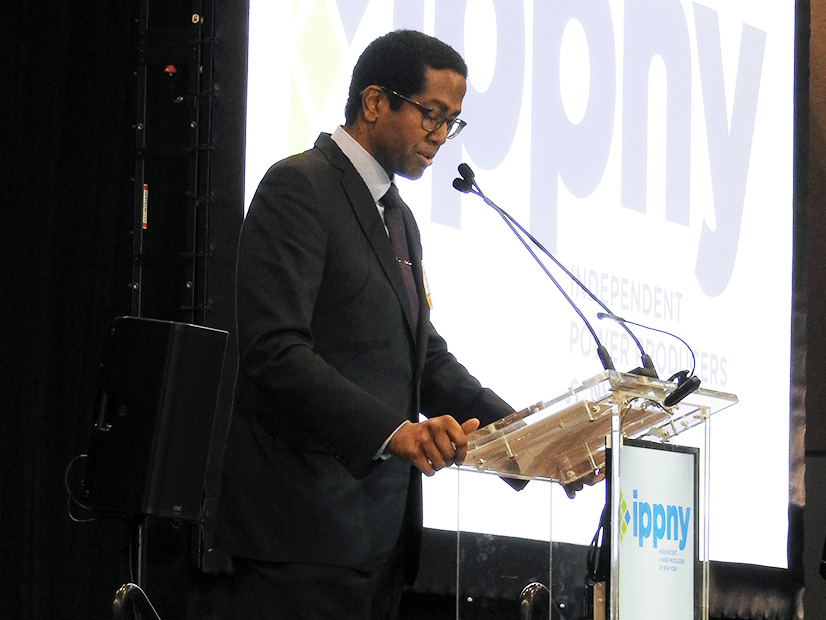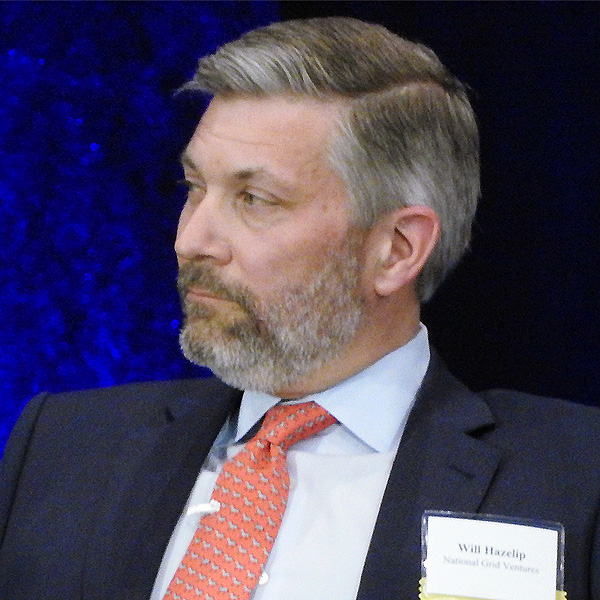Stakeholders Reject Changes to EE Measurement, Verification
VALLEY FORGE, Pa. — PJM’s Markets and Reliability Committee rejected four proposals to revise how the RTO determines how much capacity energy efficiency programs can enter into the capacity market. (See “PJM MIC Briefs: March 6, 2024.)
The proposals were built off the package PJM brought to the MRC in February, which sought to delineate the boundary between the two baselines against which EE providers can measure the savings from more efficient equipment and tighten qualifications for the baseline load, which tends to yield higher calculated savings than the standard baseline.
The PJM proposal received 51% sector-weighted support, short of the two-thirds threshold required. A proposal from Vistra Energy received 66.5% support, an alternative from CPower carried 38% support and another from Affirmed Energy had 31.5% support.
The PJM proposal would have required, among other changes, that EE providers have a contract with each individual end user, demonstrate that certain more efficient equipment would not otherwise have been installed, and account for any “leakage” of EE products purchased in one region but installed in another.
Affirmed Energy and CPower both brought alternate proposals they argued would not significantly impact EE participation in the capacity auction while still meeting PJM’s goal of enhancing measurement and verification of that capacity.
The Affirmed proposal focused on the impact to mid- and upstream EE programs, which seek to encourage retailers and manufacturers to offer more efficient products and share those products’ capacity market savings. Capturing savings at the retail level allows for small purchases to add up to the 100-kW threshold for EE participation in the wholesale market, a scale small residential consumers are unlikely to meet, Affirmed’s Luke Fishback said.
Fishback said PJM’s data collection requirements would require EE providers to receive consumer data for each retail EE product customer and enter a contract with each to obtain sole rights to enter those savings into the capacity market, which he argued would not be feasible and would eliminate much of that market’s aggregation.
The CPower proposal targeted PJM’s causation requirement for EE to qualify for the baseline load, which would have required that customers install equipment specifically to receive capacity market revenues. Senior Vice President Kenneth Schisler argued this would disqualify projects with multiple consumer benefits, such as home renovations improving insulation that may also be damaged by humidity.
The CPower proposal would have replaced PJM’s language stipulating that a project “would not have occurred absent participation in the wholesale market” with the need for “a direct connection to participation in the wholesale market.”
Both alternatives also took issue with PJM’s proposal that state technical reference manuals used to measure EE savings under the baseline load must be less than three years old. The Affirmed proposal would shift that to six years, and the CPower proposal to five.
Fishback said most TRMs issued by PJM states would have been invalidated under PJM’s proposal, requiring EE providers to instead study meter data, which he said would take too long to complete for the 2025/26 Base Residual Auction (BRA).
After the committee rejected the three proposals, Vistra offered a fourth revising PJM’s proposal to include a transitional period for the TRM limitations. Manuals less than five years old would be permitted for the 2025/26 BRA, four years for the following, and three years for 2027/28 and onwards.
Revised Reserve Requirement Study Values Endorsed
Stakeholders endorsed revised installed reserve margin (IRM) and forecast pool requirement (FPR) values accounting for inputs that changed following FERC’s approval of PJM’s critical issue fast path (CIFP) filing reworking its approach to risk modeling and accreditation. The new values were endorsed with 88% support at the MRC and passed by acclamation at the MC on March 20. (See FERC Approves 1st PJM Proposal out of CIFP.)
PJM’s Patricio Rocha Garrido said the need to recalculate was driven by several analytical developments since figures were approved by the committee in October and by fine-tuning made in recent months, as well as by parameters updated to better reflect resource pool changes. (See “Stakeholders Endorse Revised RRS Values,” PJM PC/TEAC Briefs: Feb. 6, 2024.)
The revised figures raise the IRM to 17.8%, an increase from 17.7% in the 2023 Reserve Requirement Study (RRS) results endorsed in October. The FPR would decrease to 0.9387, down from 1.1165 in the October values.
The Planning Committee voted in February to reset the two values, moving the figures in a similar direction to that endorsed by the MRC last week. The PC endorsed an IRM of 17.7% and an FPR of 0.9440.
Several resources that had submitted a notice of intent to offer into the capacity market were removed from the resource mix after PJM determined they are unlikely to come online prior to the start of the delivery year. Deactivations that were recently announced or not included in the original analysis were also removed from the expected available generation.
PJM and its Independent Market Monitor found that the characteristics of some resources had changed enough to warrant reclassifying their effective load carrying capability (ELCC) class. One of the prime reasons for this was a generator being reconfigured to run on a different fuel.
Some resources were also identified as having incorrect installed capacity (ICAP) values, particularly pseudo-tied generation, and some that had ambient derate tickets with variable megawatt reductions did not have the variability captured in their data.
MRC Amends Large Load Adjustment Forecast Issue Charge
The committee voted to revise an issue charge framing ongoing stakeholder discussion of how capacity assignments from forecasted large load additions are assigned to market participants in the same transmission zone. The proposal expands the scope of the discussion to consider load-serving entities (LSEs) able to control large load addition (LLAs) forecasts in their region. (See “1st Read of Proposal on Capacity Obligations Resulting from Large Load Additions,” PJM MIC Briefs: March 6, 2024.)
Mike Cocco of the Old Dominion Electric Cooperative (ODEC) said the unrevised language could grant sole control over the ability to submit forecasts to electric distribution companies (EDCs), including for any LSEs within their footprint. He argued that allowing a market participant to affect another participant’s load forecast is contrary to PJM’s basic market principles.
Joshua Burkholder of American Electric Power (AEP) said he supported the amendment as a minor clarification and improvement to the issue charge, noting that AEP was one of the document’s co-sponsors.
Dominion’s Jim Davis, the other co-sponsor, said the proposal being considered by the Market Implementation Committee will reflect some of the clarifications in the issue charge.
The proposal would exclude LLAs from the calculation of base zonal scaling factors and apply that load to the obligation peak load of the zone it is projected to be added to. LLAs are determined by PJM using information from LSEs about expected load growth and are detailed in the RTO’s annual load forecast reports under Table B-9.
Calpine Proposes Changes to Dual Fuel Classification
Calpine’s David “Scarp” Scarpignato presented a quick-fix proposal expanding the definition of dual-fuel resources to include units that start using their primary fuel and operate on secondary fuel. He said some gas-fired resources can start multiple times on the fuel present in the portion of pipeline leading to the generator, even if the pipeline feeding into that segment is offline or the generation owner has not entered a fuel contract. The quick-fix process allows for a problem statement and issue charge to be brought concurrent with a proposed solution.
The proposal would revise the Manual 34 definitions of dual-fuel combined-cycle and combustion turbine resources to require that they be capable of starting independently using “behind-the-fuel meter source” and then operate on the secondary fuel.
First Read on PJM Regional Planning Proposal
PJM’s Michael Herman presented a first read of the RTO’s proposal to create new long-term regional planning scenarios informing the development of the Regional Transmission Expansion Plan and state initiatives through the State Agreement Approach (SAA). (See “Stakeholders Long-term Regional Transmission Planning Proposal,” PJM PC/TEAC Briefs: March 5, 2024.)
The proposal would add five new scenarios: two base cases focused on reliability needs eight and 15 years out; two policy scenarios looking at new entry backed by state legislation eight to 15 years in advance; and an additional policy scenario including higher generation entry not backed by signed legislation. The two-year planning cycle would be extended to three years because of the increased number of scenarios. PJM’s current 10-year voltage analysis would be performed on the eight-year base scenario and include thermal analysis.
Herman said the scenarios are designed to capture evolutions the grid is expected to undergo over the next 15 years, namely 44 GW of load growth, 30 GW of generation deactivations and increased renewable energy penetration.
Ryann Reagan, of the New Jersey Board of Public Utilities (NJ BPU), said the new paradigm would provide the PJM planning team with a valuable new tool and that could aid other states follow NJ’s lead with using the SAA to pursue clean energy objectives.
Governing Documents Revisions Endorsed Through GDECS Process
Several changes to PJM’s governing documents were endorsed by the committee in line with the recommendations made by the Governing Document Enhancement and Clarification Subcommittee (GDECS). The revisions were approved by acclamation with no objections and several abstentions. (See “Other MRC Business,” PJM MRC/MC Briefs: Feb. 22, 2024.)
PJM’s Michele Greening said terms being added to the documents’ definition sections are already defined in the existing language, but that language has not been duplicated in the definition section.
On March 20 and during the first read of the changes at the Feb. 22 MRC meeting, several stakeholders questioned if some of the package’s recommendations exceed the inconsequential nature of revisions typically drafted through the GDECS.
PJM also presented a first read on another set of revisions recommended by the GDECS, including a change to lowercase several references to “end-use customer” in the tariff around load management participation in the capacity market.
PJM’s Daniel Vinnik argued the terms were capitalized through a scrivener’s error and were not meant to suggest that consumers participating in demand response programs must be PJM members.
The second set of GDECS revisions are set to be voted on by the MRC on April 25 and the MC on May 6.
Other Committee Business:
Consideration of a quick-fix proposal to expand the winter availability window for demand response resources was spiked to the April 25 MRC meeting to give more time for sponsors to consider continuing pursuing changes through the expedited stakeholder process. Bruce Campbell, of Campbell Energy Advisors, said the sponsors may only seek endorsement of the issue charge next month, which would open a standard stakeholder process to explore if changes to the load participating in demand response programs and market changes made through the CIFP process warrant changes to the availability window.
PJM’s David Hauske presented a first read on a proposal revising the Operating Agreement, Tariff and manuals to add definitions of three synchronous condenser parameters — condense startup costs, condense-to-generate costs and condense energy use. He said the parameters are in use and there would be no change to PJM practices.
Members Committee
Advocates Concerned About Transparency over Filing Rights Changes
Greg Poulos, executive director of the Consumer Advocates of PJM States presented consumer advocates’ concerns over the openness of discussions between PJM and transmission owners on revising the consolidated Transmission Owners Agreement (CTOA) to shift Federal Power Act Section 205 filing rights from PJM members to the RTO.
Exelon Director of RTO Relations Alex Stern laid out the proposed changes to the Members Committee during its Feb. 22 meeting, where several transmission representatives noted that changes to the CTOA are made through negotiations between the Transmission Owners Agreement-Administrative Committee (TOA-AC) and the PJM Board of Managers. (See “TOs Considering Handing PJM Transmission Planning Filing Rights,” PJM MRC/MC Briefs: Feb. 22, 2024.)
While advocates have been pushing for PJM to plan more proactively, Poulos said negotiations to expand its filing rights and other associated changes to the balance between stakeholder and RTO authority should be public. He said that transmission owners speaking during the February MC meeting argued that the changes could have benefits to consumers; however, those consumers’ representatives do not have a voice at the table where those changes are being considered.
